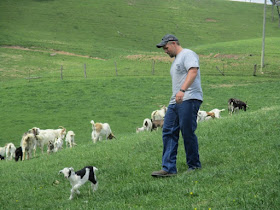E has only been home from college for a week before heading out on her next big adventure.
She has been a big help for the little time she was home, feeding the goats,
and doing some yard work.
But then she packed up the Rav and headed west.
She is doing a 9 week summer internship though the National Great Rivers Research and Education Center. The title of her research project is - Alien Invaders: Investigating a novel and recent invasion of an Asian Corbiculid clam in
Illinois’ Great Rivers hosted by the Illinois Natural History Survey. After a week of orientation in Alton Illinois she will then travel to Champaign, Illinois for the remainder of internship. For anyone interested here is the description of the project,
Project Description:
The genus Corbicula consists of moderately-sized freshwater clams native to the temperate/tropical
regions of Asia, Africa, and Australia and contains some of the most common and successful aquatic
invasive species to North America. Previously, only one species (C. fluminea) was common in Illinois and
found statewide, but a second Corbicula invader was discovered in 2008 (C. cf. largillierti). The Illinois
Natural History Survey (INHS) recently discovered a putatively new Corbicula in the Illinois River near
Marseilles, Illinois in 2015. Preliminary morphological and molecular assessment have supported the
presence of three alien Corbicula invaders, and additional research is critical to stanch their spread
(Tiemann et al., In Review).
We propose a two-part (field and lab) study: 1) to conduct presence or absence surveys for the novel
and recent Corbicula invaders at several locations (determined by habitat characteristics) across the
state to determine geographic distribution of the three forms. Locations will include up to four sites
near the confluences of major rivers (e.g., near the Missouri/Mississippi confluence, the
Kankakee/Illinois confluence, Ohio River), as well as other promising locations known to harbor
Corbicula. 2) Specimens collected will be subjected to a robust geometric morphometric assessment and
leveraged to develop species-specific environmental DNA (eDNA) assays.
Miss you already E, have a great time.
















































